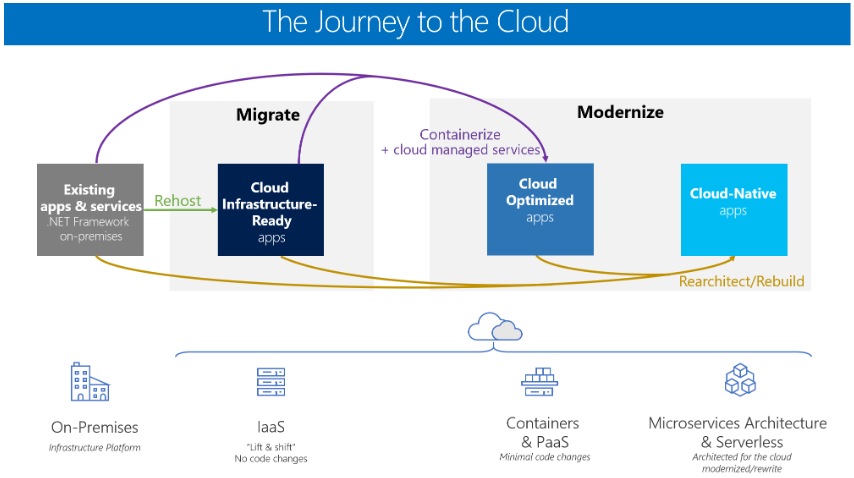Candidate apps for cloud native
Tip
This content is an excerpt from the eBook, Architecting Cloud Native .NET Applications for Azure, available on .NET Docs or as a free downloadable PDF that can be read offline.

Think about the apps your organization needs to build. Then, look at the existing apps in your portfolio. How many of them warrant a cloud-native architecture? All of them? Perhaps some?
Applying cost/benefit analysis, there's a good chance some wouldn't support the effort. The cost of becoming cloud native would far exceed the business value of the application.
What type of application might be a candidate for cloud native?
Strategic enterprise systems that need to constantly evolve business capabilities/features
An application that requires a high release velocity - with high confidence
A system where individual features must release without a full redeployment of the entire system
An application developed by teams with expertise in different technology stacks
An application with components that must scale independently
Smaller, less impactful line-of-business applications might fare well with a simple monolithic architecture hosted in a Cloud PaaS environment.
Then there are legacy systems. While we'd all like to build new applications, we're often responsible for modernizing legacy workloads that are critical to the business.
Modernizing legacy apps
The free Microsoft e-book Modernize existing .NET applications with Azure cloud and Windows Containers provides guidance about migrating on-premises workloads into cloud. Figure 1-10 shows that there isn't a single, one-size-fits-all strategy for modernizing legacy applications.

Figure 1-10. Strategies for migrating legacy workloads
Monolithic apps that are non-critical might benefit from a quick lift-and-shift migration. Here, the on-premises workload is rehosted to a cloud-based VM, without changes. This approach uses the IaaS (Infrastructure as a Service) model. Azure includes several tools such as Azure Migrate, Azure Site Recovery, and Azure Database Migration Service to help streamline the move. While this strategy can yield some cost savings, such applications typically weren't designed to unlock and leverage the benefits of cloud computing.
Legacy apps that are critical to the business often benefit from an enhanced Cloud Optimized migration. This approach includes deployment optimizations that enable key cloud services - without changing the core architecture of the application. For example, you might containerize the application and deploy it to a container orchestrator, like Azure Kubernetes Services, discussed later in this book. Once in the cloud, the application can consume cloud backing services such as databases, message queues, monitoring, and distributed caching.
Finally, monolithic apps that provide strategic enterprise functions might best benefit from a Cloud-Native approach, the subject of this book. This approach provides agility and velocity. But, it comes at a cost of replatforming, rearchitecting, and rewriting code. Over time, a legacy application could be decomposed into microservices, containerized, and ultimately replatformed into a cloud-native architecture.
If you and your team believe a cloud-native approach is appropriate, it behooves you to rationalize the decision with your organization. What exactly is the business problem that a cloud-native approach will solve? How would it align with business needs?
Rapid releases of features with increased confidence?
Fine-grained scalability - more efficient usage of resources?
Improved system resiliency?
Improved system performance?
More visibility into operations?
Blend development platforms and data stores to arrive at the best tool for the job?
Future-proof application investment?
The right migration strategy depends on organizational priorities and the systems you're targeting. For many, it may be more cost effective to cloud-optimize a monolithic application or add coarse-grained services to an N-Tier app. In these cases, you can still make full use of cloud PaaS capabilities like the ones offered by Azure App Service.
Summary
In this chapter, we introduced cloud-native computing. We provided a definition along with the key capabilities that drive a cloud-native application. We looked at the types of applications that might justify this investment and effort.
With the introduction behind, we now dive into a much more detailed look at cloud native.
References
Feedback
Coming soon: Throughout 2024 we will be phasing out GitHub Issues as the feedback mechanism for content and replacing it with a new feedback system. For more information see: https://aka.ms/ContentUserFeedback.
Submit and view feedback for
